
The Weka Pass Railway owns a number of ex-New Zealand Railways carriages. Many have been restored and can be seen operating on our trains, a few are out of service for maintenance, and a couple are stored awaiting eventual overhaul.
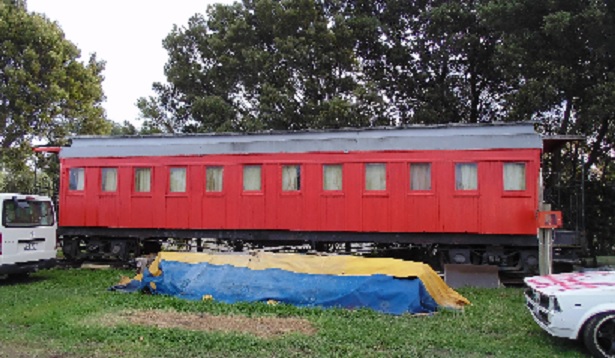
A 523 – Addington Workshops
A 523 is the oldest carriage in the Weka Pass Railway fleet, built by Addington Workshops in Christchurch as a 43-foot 9-inch wooden paneled elevated roof Clerestory carriage. It entered service in 1896. No records exist for its exact date of commissioning, or its primary location, though it was likely used on a number of South Island mainlines and branches.
The carriage entered a new life in late May 1954 as EA 2674 – the EA classification representing a change of purpose for the carriage from the Passenger to the Ways and Works department of the NZR. The carriage was written off on the 9th September 1972 and was sold to the Shantytown Railway of Paroa, and later to the Weka Pass Railway, where it arrived in 1986. Unlike all of our other carriages, there is no intention of restoring A 523 to operational condition – it perfectly serves as the society’s bunkhouse.
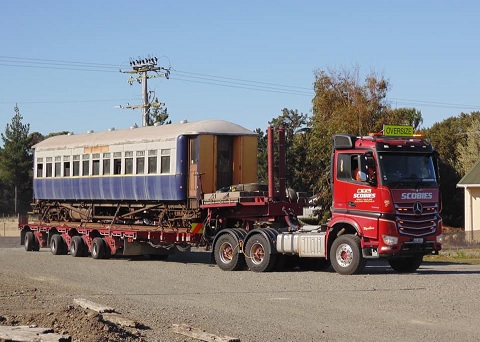
A 1720 – Addington Workshops
A 1720 is the most recent addition to the Weka Pass Railway fleet, built by Addington Workshops in Christchurch as a 50-foot steel paneled suburban carriage, recently acquired to compliment the remainder of our carriage fleet. It entered service on the 10th October 1931 on Dunedin suburban trains. It was renumbered as A 50084 around 1978 due to the introduction of the traffic monitoring system (TMS).
In 1983, the vehicle was sold to the Otago Excursion Train Trust. The carriage spent many years as Carriage ‘N’ on the Taieri Gorge Railway. It was renumbered as XPC 588 during its time with OETT.
The carriage was sold to the Weka Pass Railway in late 2019, and arrived onto our site in March 2020 for future restoration.
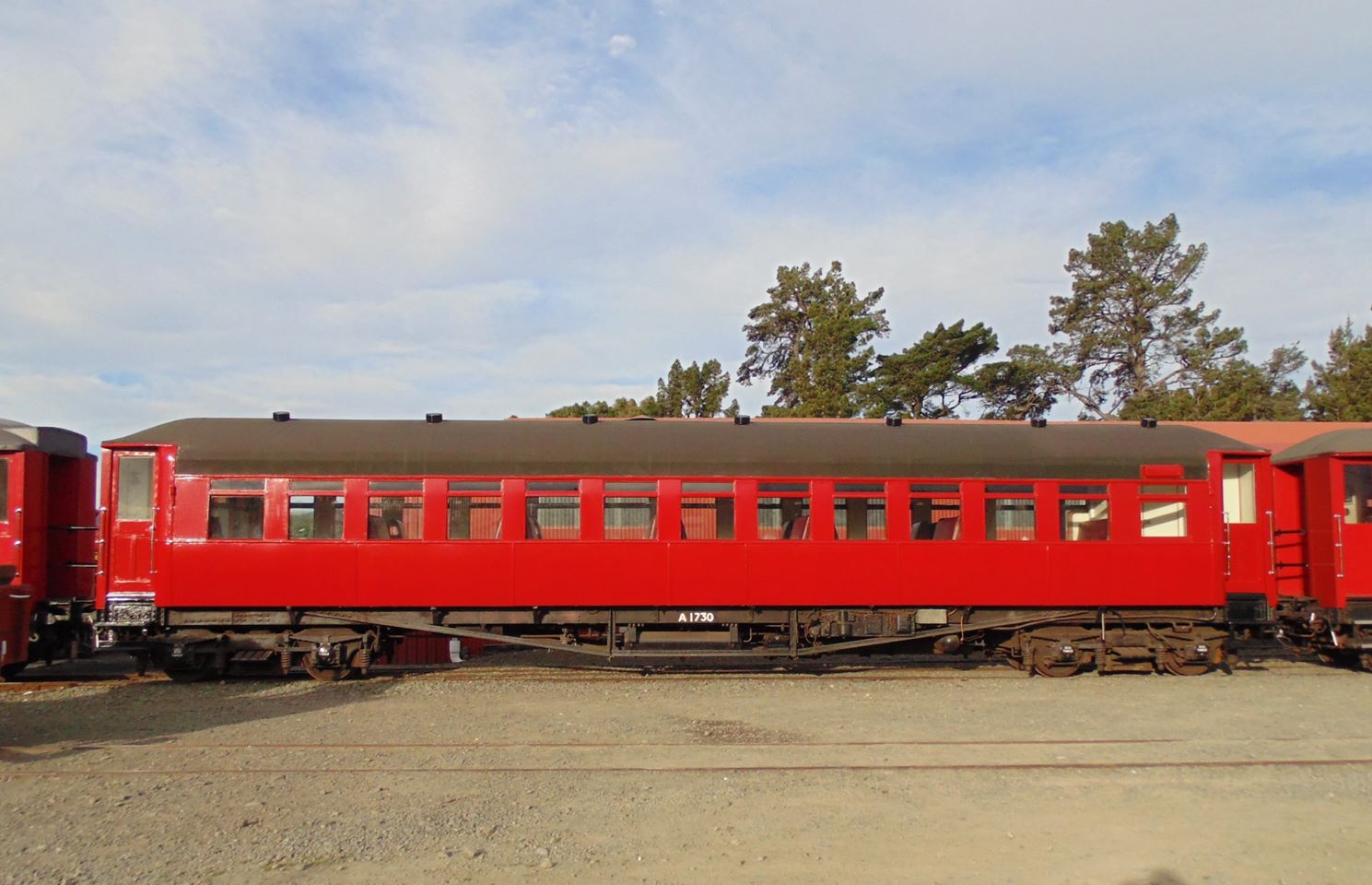
A 1730 – Addington Workshops
A 1730 was built by Addington Workshops in Christchurch as a 50-foot steel paneled suburban carriage. It entered service on the 10th October 1931 for Dunedin suburban trains. It was renumbered as A 50132 around 1978 due to the introduction of the traffic monitoring system (TMS).
The carriage was written off on the 13th August 1983. It was sold to the Weka Pass Railway, and arrived at Waipara on the 10th December 1983. It was used until January 2012, when it was taken out of service for a full overhaul. A 1730 returned to service in November 2017 in time for the Christmas Peak season.

A 1731 – Addington Workshops
A 1731 was built by Addington Workshops in Christchurch as a 50-foot steel paneled suburban carriage. It entered service on the 10th October 1931 on Dunedin suburban trains. It was renumbered as A 50140 around 1978 due to the introduction of TMS.
The carriage was written off in August 1983. It was sold to the Weka Pass Railway and arrived at Waipara on the 10th December 1983. A 1731 was used until the mid-1990s but due to major structural issues, it was placed into storage until June 2004 when restoration commenced. The carriage was fully restored and returned to service on 1 May 2011.
In 2012, the Weka Pass Railway received the prestigious FRONZ (Federation of Rail Organisations of New Zealand) Passenger Carriage Restoration Award for the carriage’s restoration. The certificate is proudly framed and displayed in the carriage vestibule.
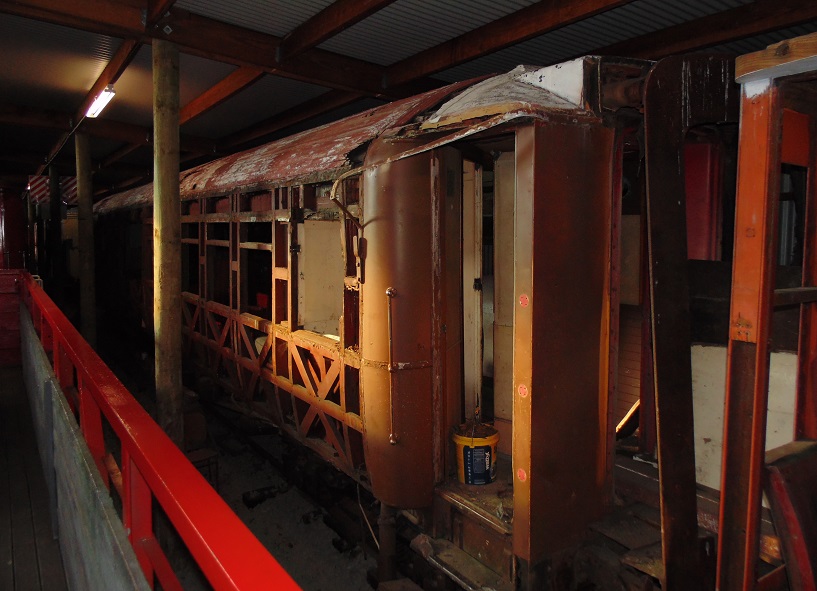
A 1732 – Addington Workshops
A 1732 was built by Addington Workshops in Christchurch as a 50-foot steel paneled suburban carriage. It entered service on the 10th October 1931 on Dunedin suburban trains. It was renumbered as A 50157 around 1978 due to the introduction of TMS.
The carriage was written off on the 13th August 1983. It was sold to the Taieri Gorge Railway (now Dunedin Railways). After spending many years in storage, it was acquired by the Weka Pass Railway to complete our A car numerical sequence, and it arrived in Waipara on the 13th March 2009. It is currently in storage, and its restoration is planned for sometime in the medium-term future.
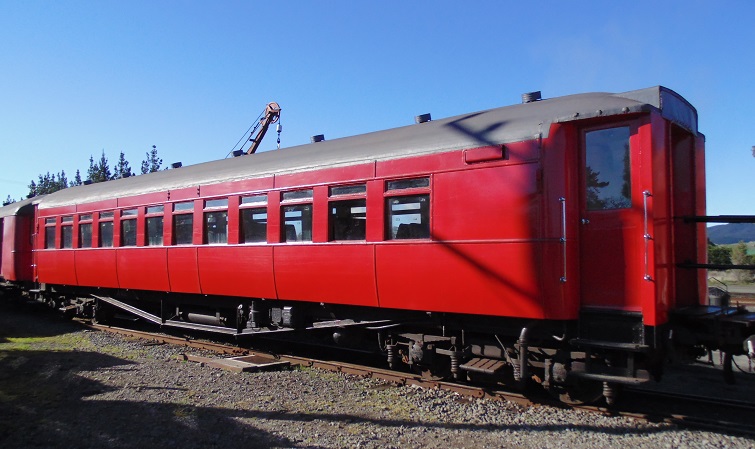
A 1733 – Addington Workshops
A 1733 was built by Addington Workshops in Christchurch as a 50-foot steel paneled suburban carriage. It entered service on the 10th October 1931 on Dunedin suburban trains. It was renumbered as A 50167 around 1978 due to the introduction of TMS.
The carriage was written off on the 13th August 1983. It was sold to the Weka Pass Railway, and arrived at Waipara on the 10th December 1983. A 1733 was used until 2003 when it was taken out of service for repairs, it returned to service shortly after. The carriage was again used until April 2010 when it was taken out of service for major repairs and a cosmetic tidy-up. A 1733 once again returned to service in January 2012.

A 1760 – Addington Workshops
A 1760 was built by Addington Workshops in Christchurch as a 50-foot steel paneled suburban carriage. It entered service on the 10th October 1931 on Dunedin suburban trains. It was renumbered as A 50223 around 1978 due to the introduction of TMS.
The carriage was written off on the 13th August 1983. It was sold to the Taieri Gorge Railway (now Dunedin Railways). Just before the purchase of the carriage by the Weka Pass Railway, it was undergoing rebuilding as a buffet car, but the work halted after it was decided to rebuilt an ex-Wairarapa Connection 56-foot carriage. It was acquired by the Weka Pass Railway, and arrived in Waipara on the 1st October 2008. A 1760 is currently in storage.
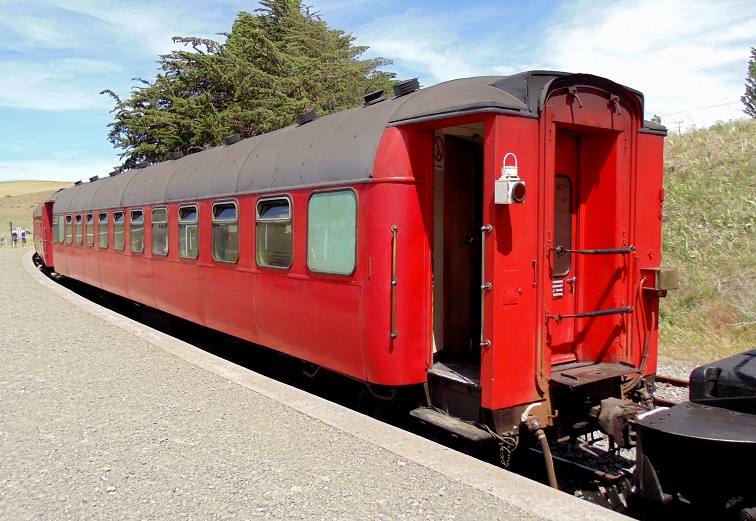
AC 3548 – Addington Workshops
A 1935 was built by Addington Workshops in Christchurch as a 56-foot steel-paneled mainline carriage. It entered service on the 9th December 1939 as A 1935. The carriage was assigned to the Southerner passenger service between Christchurch and Invercargill. It was renumbered as A 3338 around 1978 due to the introduction of TMS.
In 1988, the carriage was rebuilt at Addington Workshops, where it was fitted with 37 aircraft type reclining seats, food supply facilities, the electrical equipment was changed to be run off head-end power supply, was also fitted with high-speed type 28020 bogies, and reclassified as AC 3548. It was assigned to the Capital Connection long-distance commuter service between Palmerston North and Wellington.
After being surplus to requirements due to the introduction of the ex-British Rail Mark 2 carriages on the service, the car was withdrawn and sold to the Rail Heritage Trust. After a lease between the Rail Heritage Trust and the Weka Pass Railway was made, the carriages arrived at Waipara on the 14th February 2001. After undergoing repairs, it entered service for the railway in 2003.
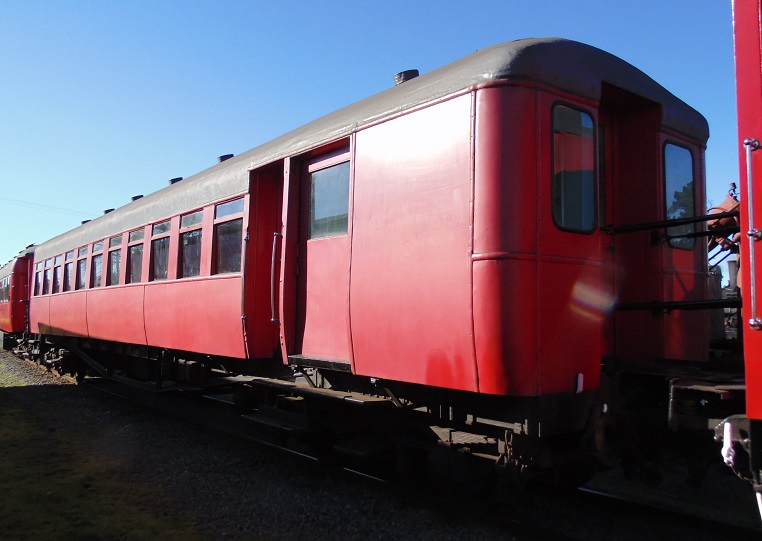
Al 1697 – Addington Workshops
Al 1697 was built by Addington Workshops in Christchurch as a 50-foot steel paneled suburban carriage, A 1697. It entered service on the 10th October 1931 on Dunedin suburban trains. The carriage was rebuilt as a car-van (a carriage with a built-in guards compartment) in October 1969 and reclassified as Al 1697. It was renumbered as AL 50026 around 1978 due to the introduction of TMS. Note the capitalisation of the ‘L’.
The carriage was written off on the 13th August 1983. It was sold to the Weka Pass Railway and arrived at Waipara on the 10th December 1983. Restoration started in 1990 and was complete in 1993. It’s restoration has enabled wheelchair access on the train. Al 1697 was taken out of service in December 2017 for cosmetic and mechanical repairs but has since returned to the running fleet.
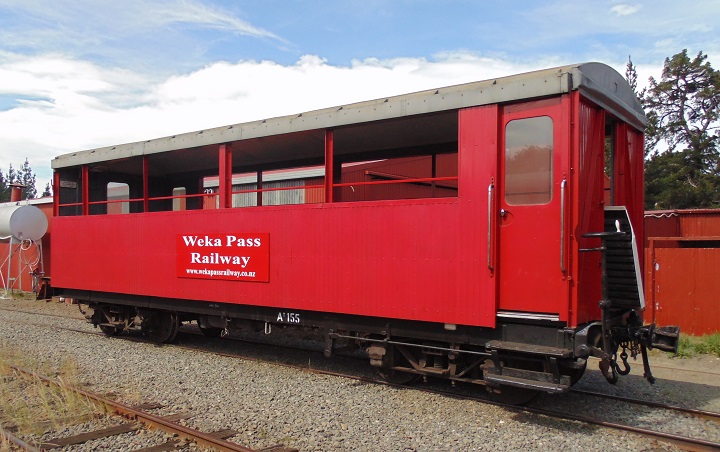
At 155 – Addington Workshops
At 155 was built by Addington Workshops as a 30-foot T class cattle wagon. It entered service circa 1960 as T 155. It was renumbered as T 385 around 1978 due to the introduction of TMS.
It was written off on the 7th November 1981. The wagon was later purchased by the Weka Pass Railway in 1984, and work to modify the wagon as a covered viewing car started not long after. The wagon entered service for the railway in 1988, and was reclassified as At 155. This follows the NZR convention of classifying passenger carrying vehicles with an ‘A’.
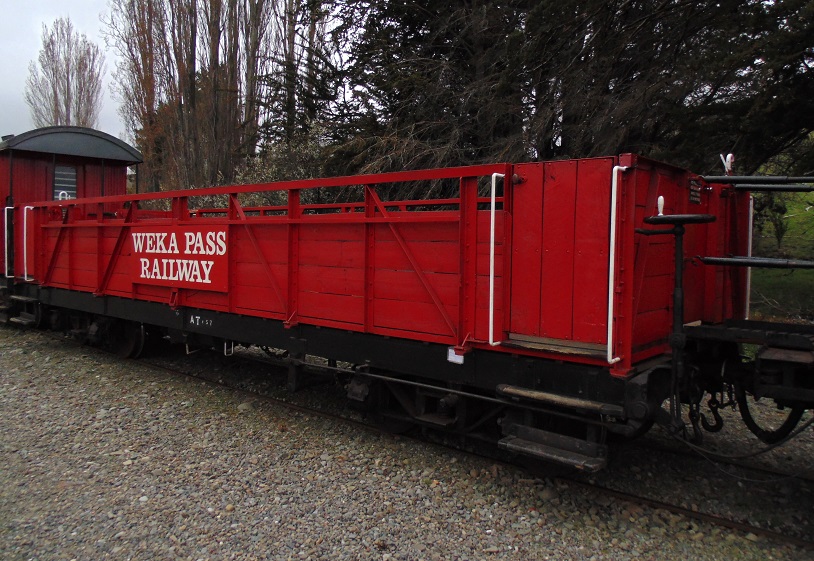
At 157 – Addington Workshops
At 157 was built by Addington Workshops as a 30-foot T class cattle wagon. It entered service circa 1960 as T 157. It was renumbered as T 409 around 1978 due to the introduction of TMS.
It was written off on the 7th November 1981. The wagon was later purchased by the Weka Pass Railway in 1984, and work to modify the wagon as an open viewing car started not long after. The wagon entered service for the railway in September 1993, and was reclassified as At 157. This follows the NZR convention of classifying passenger carrying vehicles with an ‘A’.

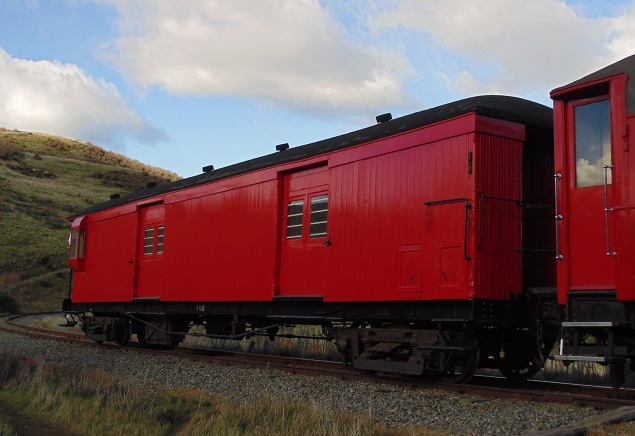
Guards Van – F 497 – Hillside Workshops
F 497 was built by Hillside Workshops as a 47-foot, 6-inch wooden body guards van. It entered service on the 23rd July 1927. It was renumbered as F 962 around 1978 due to the introduction of TMS. It was written off on the 23rd April 1983.
The van was later purchased by a Weka Pass Railway member (who donated it to the railway), and the van arrived in Waipara in April 1985. F 497 was restored in 1998, and has been in service since. Whilst the van is larger than F 699, it has a much smaller guards compartment. Due to the length of our storage shed, F 497 is not normally used on our train, although it makes occasional appearances on special events and charters. The vehicle is known as the ‘big van’ by Weka Pass’ operational volunteers.

Guards Van – F 699 – Addington Workshops
F 699 was built by the Addington Workshops woodwork apprentices as a 37-foot, 6-inch wooden body guards van. It entered service in 1964. It was renumbered as F 2854 around 1978 due to the introduction of TMS. The van was assigned to Dunedin in its later life, working on winter goods trains up the Otago Central Railway. The gas heaters on the more modern ‘FM’ vans could not cope with the frigid winter temperatures – the coal-fired pot belly in 699 being favoured. It’s heat-trapping abilities are put to the test on our annual ‘Mid-Winter Night Trains.’ An ‘Otago Central Line Only’ sign is fitted to the interior of the van as a memento to this period of the vehicle’s life.
It was written off on the 8th November 1986. The van was purchased by the Weka Pass Railway in April 1987. It was used until taken out of service for an overhaul. F 699 returned to service in 1994, and has been in service since.
In modern New Zealand, the role of the guards van or car-van is largely redundant. Goods trains are in most instances single-man crewed by the locomotive engineer, or driver. This is the case all around the world – the once iconic cabooses of North America have reached the same fate.
KiwiRail operated long-distance passenger trains, such as the TranzAlpine and Northern Explorer, now use re-purposed former FM class guards vans for luggage storage, and as a viewing facility. Train Managers and Onboard Service Managers, the modern equivalent of guards, now typically travel in the passenger carriages and cafe cars. The traditional guards van however is making a comeback – KiwiRail’s latest luggage van design, the AKS class, includes a crew room, not too dissimilar to those found in our F vans. The sight of a classic red guards van, complete with kerosene oil lamps, is now a sight that can only be enjoyed on heritage railways such as the Weka Pass Railway.

Our carriage and van fleet, as well as our fleet of 31 ex-New Zealand Railways wagons, are all maintained and cared for by our small team of active volunteers. They are inspected annually, and worked on throughout the year to keep them both safe and historically accurate.
The Weka Pass Railway prides itself as being a premier heritage railway and ‘live museum’ where railway history is preserved for the next generation. Our constitution states that we do what we do ‘for the enjoyment, education and transport for members of the society and the public’.
Our hobby is expensive, both in monetary terms, and that of human resource. We really appreciate all the support we can get, and suggest that enthusiasts spread our word, or ‘get their hands dirty’ to support the cause. Click here to become a member, or click here to show your support with a donation.

